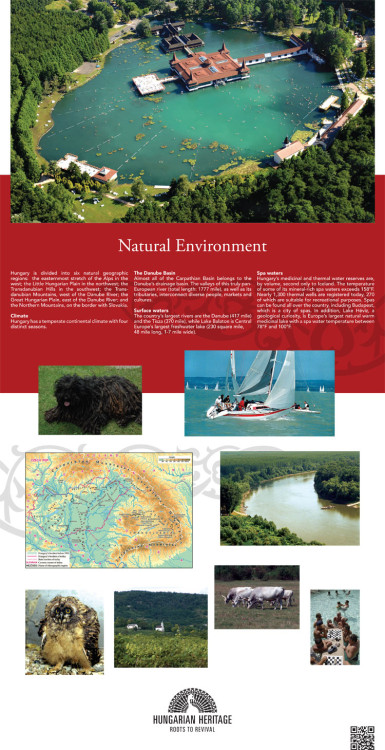Hungary is divided into six natural geographic regions: the easternmost stretch of the Alps in the west; the Little Hungarian Plain in the northwest; the Transdanubian Hills in the southwest; the Transdanubian Mountains, west of the Danube River; the Great Hungarian Plain, east of the Danube River; and the Northern Mountains, on the border with Slovakia. Climate Hungary has a temperate continental climate with four distinct seasons. The Danube Basin Almost all of the Carpathian Basin belongs to the Danube’s drainage basin. The valleys of this truly pan-European river (total length: 1777 mile), as well as its tributaries, interconnect diverse people, markets and cultures. Surface waters The country’s largest rivers are the Danube (417 mile) and the Tisza (370 mile), while Lake Balaton is Central Europe’s largest freshwater lake (230 square mile, 48 mile long, 1-7 mile wide). Spa waters Hungary’s medicinal and thermal water reserves are, by volume, second only to Iceland. The temperature of some of its mineral-rich spa waters exceeds 158°F. Nearly 1,300 thermal wells are registered today, 270 of which are suitable for recreational purposes. Spas can be found all over the country, including Budapest, which is a city of spas. In addition, Lake Hévíz, a geological curiosity, is Europe’s largest natural warm medicinal lake with a spa water temperature between 78°F and 100°F.
Related pages:
Go to the next stop of the virtual tour »»»







